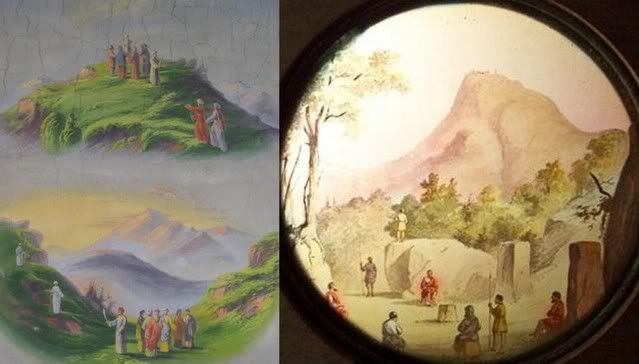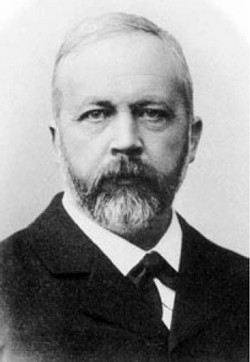Post by Tamrin on Jun 15, 2009 7:30:12 GMT 10
Asherah and the God of the Early Israelites
[Excerpt - Paper by Professor Johanna H. Stuckey, York University - Linked Above]
[Excerpt - Paper by Professor Johanna H. Stuckey, York University - Linked Above]
Though all three ancient Levantine great goddesses appear in the Hebrew Bible, the Christian Old Testament, Asherah occurs most often: forty times in nine books. The biblical texts are hostile witnesses, for they either vilify the goddess or, more often, obliterate her grammatically, for instance, by referring to her in the masculine plural as "the asherahs." Until the Ugaritic tablets were deciphered beginning in the 1930s, most scholars did not even speculate that "the asherahs" might be obscuring a goddess(Hadley 2000:4). They interpreted "the asherahs" as either wooden poles, cult objects from Baal worship, or groves of trees. Only a brave few claimed that "the asherahs" referred to a goddess citing such passages as I Kings 18, in which "prophets of Asherah"(1) served Queen Jezebel(Binger 1997:111; Yamashita 1963:126). The first detailed study of Asherah in the Hebrew Bible after the Ugaritic discoveries concluded that "the asherah" represented both a wooden cult object and a goddess (Reed 1949:37, 53), a position some scholars still hold today.
Unquestionably, "the asherahs" were usually wooden; they stood upright, often beside altars, along with stone pillars. However, in at least eight instances, they are described as carved(Pettey 1990:45). Thus, far from being merely wooden "cult poles," they were probably quite large carved images. As was the case with cult statues in other areas of the Eastern Mediterranean, "the asherahs" almost certainly would have been "animated" ritually (Walker and Dick 1999:57). Thus they did not just represent the goddess, but actually were worshipped as Asherah herself. Further, according to the Bible, a statue of Asherah stood in the Solomonic temple in Jerusalem for about two-thirds of its existence (Patai 1990:50). Asherah "must, then, have been a legitimate part of the cult of Yahweh" (Olyan 1988:13).
The Hebrew Scriptures regularly pair Asherah's name, especially "the asherahs," with Baal's, so that some scholars have wondered whether Asherah had ousted Astarte as Baal's consort. In 1963 Yamashita noted that most of the references to Asherah in the Hebrew Bible, including those pairing Asherah with Baal, were associated with only one source (1963:123-137). Later, Olyan argued very convincingly that the biblical attacks on Asherah were "restricted to the Deuteronomistic History"(2) and to texts exhibiting Deuteronomistic influence. For instance, the numerous pairings of Baal with Asherah's "cult symbol," called "the asherah," are part of a reformist, monotheistic "anti-asherah polemic" aimed at discrediting "the asherah" by associating it with Baal and Astarte (Olyan 1988: 1, 3, 13-14). This polemic was necessary because Asherah "had some role in the cult of Yahweh … not only in popular Yahwism, but in the official cult as well" (Olyan 1988:74).
In addition to the testimony of the Hebrew Bible, there is also considerable archaeological evidence that may throw light on the role of Asherah in the religion of the early Israelites. First, a considerable number of small, clay, female statuettes, which archaeologists usually call "pillar figurines," have been unearthed all over Israel. Dating to the eighth and early seventh centuries, that is, to the height of the Israelite monarchy, they occur in almost every excavation of the period (Kletter 1996: 4, 40-41).(3) So many pillar figurines have been excavated in the heartland of Judah that they are often regarded as "a characteristic expression of Judahite piety" (Keel and Uehlinger 1998:327; Kletter 1996:45).
Unquestionably, "the asherahs" were usually wooden; they stood upright, often beside altars, along with stone pillars. However, in at least eight instances, they are described as carved(Pettey 1990:45). Thus, far from being merely wooden "cult poles," they were probably quite large carved images. As was the case with cult statues in other areas of the Eastern Mediterranean, "the asherahs" almost certainly would have been "animated" ritually (Walker and Dick 1999:57). Thus they did not just represent the goddess, but actually were worshipped as Asherah herself. Further, according to the Bible, a statue of Asherah stood in the Solomonic temple in Jerusalem for about two-thirds of its existence (Patai 1990:50). Asherah "must, then, have been a legitimate part of the cult of Yahweh" (Olyan 1988:13).
The Hebrew Scriptures regularly pair Asherah's name, especially "the asherahs," with Baal's, so that some scholars have wondered whether Asherah had ousted Astarte as Baal's consort. In 1963 Yamashita noted that most of the references to Asherah in the Hebrew Bible, including those pairing Asherah with Baal, were associated with only one source (1963:123-137). Later, Olyan argued very convincingly that the biblical attacks on Asherah were "restricted to the Deuteronomistic History"(2) and to texts exhibiting Deuteronomistic influence. For instance, the numerous pairings of Baal with Asherah's "cult symbol," called "the asherah," are part of a reformist, monotheistic "anti-asherah polemic" aimed at discrediting "the asherah" by associating it with Baal and Astarte (Olyan 1988: 1, 3, 13-14). This polemic was necessary because Asherah "had some role in the cult of Yahweh … not only in popular Yahwism, but in the official cult as well" (Olyan 1988:74).
In addition to the testimony of the Hebrew Bible, there is also considerable archaeological evidence that may throw light on the role of Asherah in the religion of the early Israelites. First, a considerable number of small, clay, female statuettes, which archaeologists usually call "pillar figurines," have been unearthed all over Israel. Dating to the eighth and early seventh centuries, that is, to the height of the Israelite monarchy, they occur in almost every excavation of the period (Kletter 1996: 4, 40-41).(3) So many pillar figurines have been excavated in the heartland of Judah that they are often regarded as "a characteristic expression of Judahite piety" (Keel and Uehlinger 1998:327; Kletter 1996:45).






